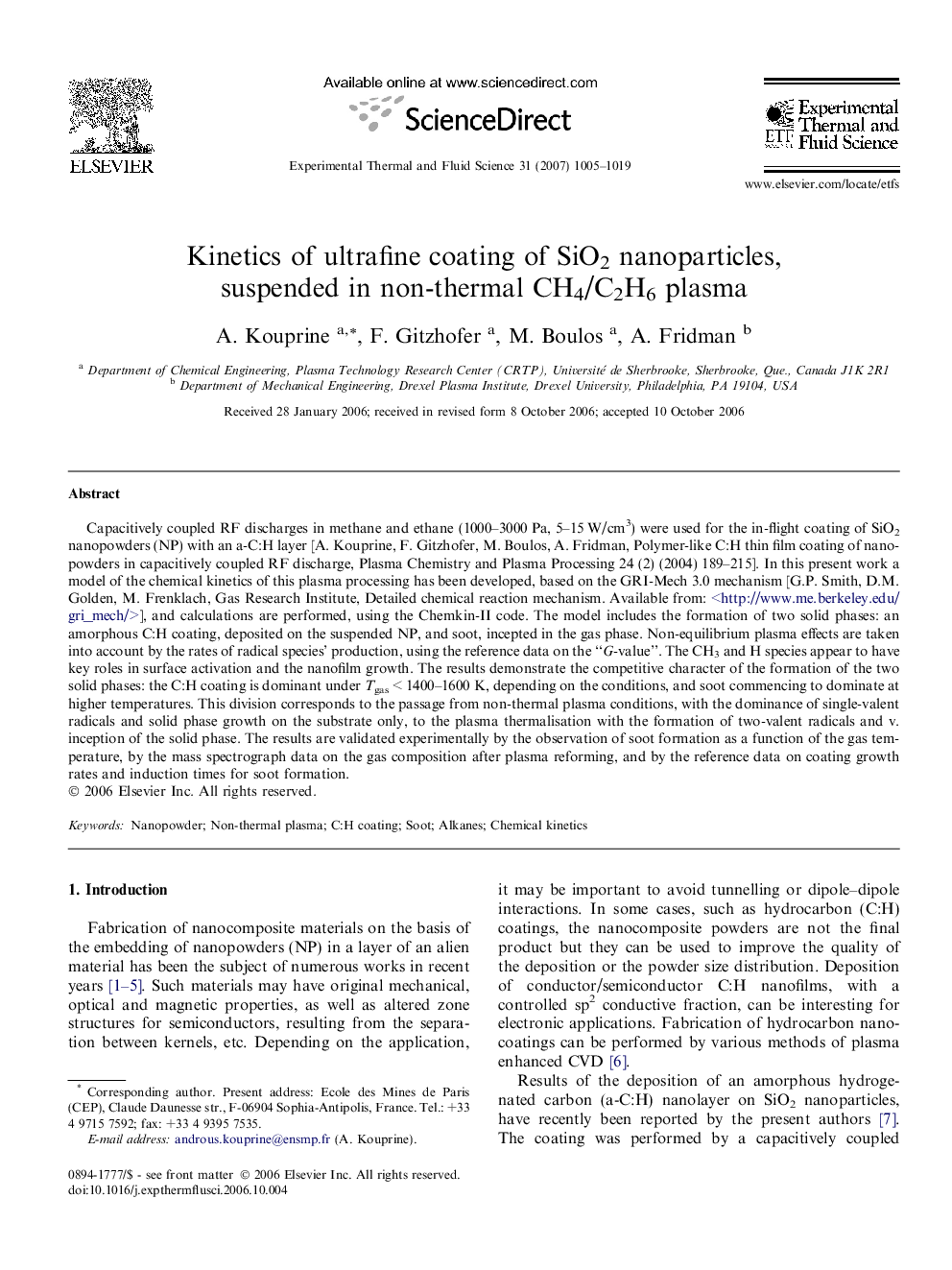| Article ID | Journal | Published Year | Pages | File Type |
|---|---|---|---|---|
| 652728 | Experimental Thermal and Fluid Science | 2007 | 15 Pages |
Capacitively coupled RF discharges in methane and ethane (1000–3000 Pa, 5–15 W/cm3) were used for the in-flight coating of SiO2 nanopowders (NP) with an a-C:H layer [A. Kouprine, F. Gitzhofer, M. Boulos, A. Fridman, Polymer-like C:H thin film coating of nanopowders in capacitively coupled RF discharge, Plasma Chemistry and Plasma Processing 24 (2) (2004) 189–215]. In this present work a model of the chemical kinetics of this plasma processing has been developed, based on the GRI-Mech 3.0 mechanism [G.P. Smith, D.M. Golden, M. Frenklach, Gas Research Institute, Detailed chemical reaction mechanism. Available from:
